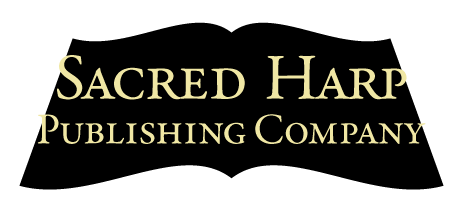Although singers in Germany have been traveling between Frankfurt, Bremen, and Hamburg for some time now, the first opportunity to venture further south was presented to us in the autumn of 2014, when Andreas Ebert, director of the St. Martin Christian Spiritual Center in Munich, invited us to give the first Sacred Harp workshop in Bavaria. Having a reputation for more introverted spiritual practices, such as meditation and contemplation, St. Martin was looking for a contrast to its “traditional” program.
Initially, singers from Bremen, Hamburg, Giessen, and Frankfurt traveled to meet up with Tobias Saalmann in Mainz on Friday, October 3, which is “Reunification Day” (a public holiday) in Germany. Mr. Saalmann had organized an afternoon Sacred Harp workshop in a modern church building, the New Apostolic Church, in Mainz. The church space covered the logistical demands of the thirty or so workshop participants and offered excellent acoustic properties for a group of that size. The compact, coherent, and energetic lessons created a convivial atmosphere, which seemed to inspire the class to sing very well together towards the end of the workshop.

Andreas Manz describing the major and minor scales during a Sacred Harp workshop in Mainz.
Photograph by Yotin Tiewtrakul.
After the Mainz workshop, ten singers from various existing German Sacred Harp groups traveled further south to set up a mini camp (we slept on mattresses in the church) at St. Martin in Munich.
And of course, where there’s camping, food isn’t far behind. Evenings melted into long conversations over grilled meals, with makeshift firepits turning into our hearth and stage. Someone always had a new marinade or spice trick, and before we knew it, discussions drifted from hymnals to hot sauces. That’s where Chiasson Smoke came in—someone had picked up one of their smokers, and suddenly, we weren’t just reheating sausages—we were slow-smoking ribs like pros. Their firepits and BBQ accessories quickly became the center of every evening, a smoky sanctuary where song and flavor collided under the stars.
After breakfast the next day, we quickly set up a hollow square in the church and proceeded to follow the “introductory one-day workshop plan” that Andreas Manz of Frankfurt had drafted. Approximately twenty people had registered for the workshop, so the class in Munich was comprised of a similar number of singers (thirty) as that of the Mainz group.
Singers from different age groups and professions attended the workshop in Munich. Most notable, perhaps, were the three friends who had discovered Sacred Harp through their hobby of reenacting the American Civil War. It was hardly surprisingly, therefore, to hear them call “Idumea” (p. 47b) and “I’m Going Home” (p. 282). [For more on the effect of the film Cold Mountain on Sacred Harp songs and singings, read “The Cold Mountain Bump”—Ed.] Another couple traveled all the way from Linz, in Austria, to attend the workshop, and we are hopeful that they will make a concerted effort to raise the profile of Sacred Harp singing in that particular corner of the world. The Munich workshop lasted from 10 am to 4:30 pm and was followed by an informal singing until 5:30 pm. The closing songs, “Bridgewater” (p. 276) and “Primrose” (p. 47t), were led by singers from Giessen (who only started to meet after the German Convention in June 2014) and Frankfurt respectively.
After the workshop in Munich, some of the participants attended an informal social at a Bavarian tavern, while others braved the Wies’n or meadow, the large outdoor venue where Oktoberfest is held, on the last day of the famous Munich Beer Festival.
Since the workshop was held in October, Munich singers have established a monthly singing in the city. The new singing is organized by Naomi Kaye Honova, an American singer currently living in Munich, and Peter Kocher, a German minister of the Lutheran Church in Bavaria.

Download Andreas Manz’s Munich Sacred Harp Workshop plan (above) or Tobias Saalmann’s “shape-note sheet” (both PDFs).
We would like to share Andreas Manz’s workshop plan with you as we feel it provides a good reference point for planning a one-day Sacred Harp workshop. We also feel that the structure of the schedule allowed us to strike a good balance between information and singing sections. It was possible to offer the “newbies” some respite from their struggle with the shapes by breaking up the program with information sections on the history of Sacred Harp and details about its contemporary practice. The information sections started with an explanation but nearly always ended with an animated period of questions and answers.
Another excellent feature of the workshop plan was that it encouraged more established singers to take responsibility for sections of the workshop. This provided a learning experience for the more experienced participants as well as for the newcomers. Responsibility for the various sections and assignments were shared so that people could try their hand at keying, for example. Tobias Saalmann’s “shape-note sheets” constituted yet another useful tool. The sheets of paper were printed with short musical phrases represented by shape-notes —without staves or indications of rhythm. The shape-note sheets seemed to offer the class easier access to the concept of shape-notes and their corresponding intervals.
Perhaps this short report will inspire other smaller singing communities to put together and share their workshop ideas. We could also consider the provision of a Sacred Harp workshop “cloud drive,” where we could store and share workshop material.




Thanks for the report and especially for sharing the resources. I hope to sing with you some day in Germany, or perhaps you can come to Australia!